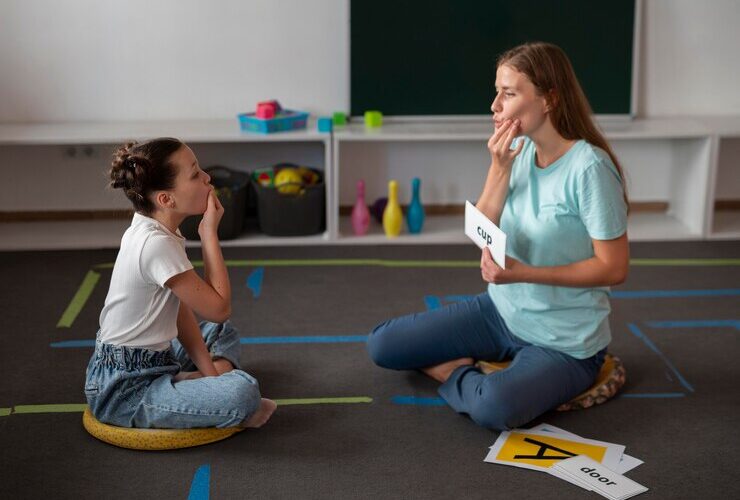Speech Sound Disorders (SSD)
Children with SSD produce speech sounds incorrectly. Specifically, they have trouble with articulation (making certain sounds) or phonological processes (patterns of sound errors). For instance, a child might replace a ‘w’ with an ‘r,’ saying ‘wabbit’ rather than ‘rabbit.’
Language Disorders
Some language disorders fall into one of two categories – difficulty understanding or difficulty using (sometimes called receptive language and expressive language). Children with receptive language disorders might have trouble following directions, answering questions or understanding what people are saying. Children with expressive language disorders might have a smaller vocabulary than their peers. They might misuse words or add, drop or change endings. They might use inappropriate words or make mistakes around singsong phrases called song inflections.
Stuttering
The hallmark feature of stuttering is disfluency – a break in the forward flow of speech. When a kid who stutters speaks, he might repeat sounds (‘b-b-b-ball’), prolong sounds (‘ssssssnake’), or struggle with sounds that aren’t sturdy or don’t flow from his mouth. Stuttering can make a kid anxious, and he might not be as willing to answer questions in class or talk to a friend or even talk to himself.
Voice Disorders
Voice disorders often relate to pitch, loudness, or voice quality. A child with a voice disorder may sound hoarse, breathy, or have an unusual pitch. The cause of these disorders may be vocal abuse (such as yelling) or may relate to medical conditions of the vocal cords.
Social Communication Disorder (SCD)
Children with social communication disorder struggle with using language in social situations. They might not understand how to use language appropriately in conversation, pick up on others’ nonverbal cues such as facial expressions and gestures, understand the purpose of conversation, use appropriate language turns, or know how to adjust their conversational style to match the circumstances.
Assessing Speech and Language Conditions
Early assessment and intervention are crucial for managing speech and language conditions. Various tools and assessments help professionals diagnose and plan appropriate interventions.
The Comprehensive Assessment of Spoken Language, Second Edition (CASL-2) is a widely used tool that evaluates spoken language across multiple domains, including lexical/semantic, syntactic, supralinguistic, and pragmatic language. It provides a detailed picture of a child’s language abilities, helping identify specific areas of need.
The Oral and Written Language Scales, Second Edition (OWLS-II) assesses both oral and written language skills. It is useful for identifying language disorders and planning interventions that address spoken and written communication.
Supporting Children with Speech and Language Conditions
Effective support for children with speech and language conditions involves a combination of professional intervention and home-based strategies. Speech-language pathologists (SLPs) are crucial in diagnosing and treating these conditions.
Parents and caregivers can also support language development at home. Regular reading, engaging in conversations, and providing a language-rich environment can make a significant difference. Encouraging children to express themselves and practicing good communication skills are essential to supporting their progress.
Resources like those available at WPS Publish offer valuable information and tools for understanding and managing speech and language conditions. These resources can guide parents, educators, and professionals in providing the best support for children.
Summary – Childhood Speech and Language Conditions
Childhood speech and language conditions present unique challenges, but with early assessment and targeted intervention, children can overcome these obstacles and develop strong communication skills. By utilizing professional assessments like CASL-2 and OWLS-II and fostering a supportive environment, we can help children improve their communication abilities.




0 Comments